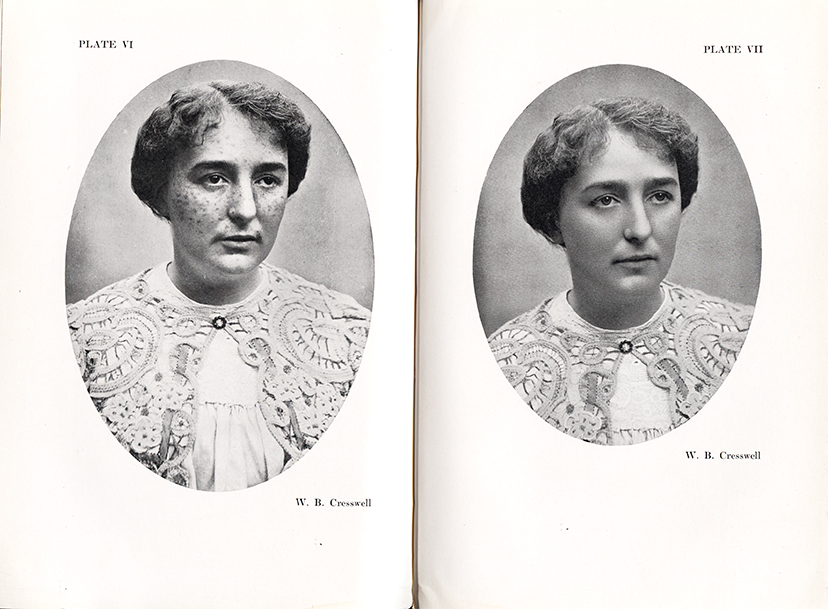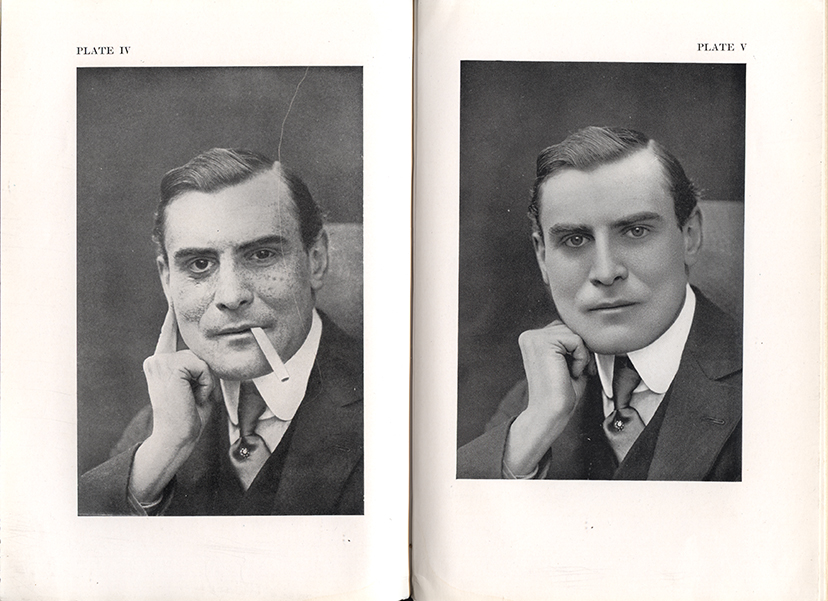
Formulator
Forum Replies Created
-
Formulator
MemberAugust 29, 2023 at 7:27 pm in reply to: body wash viscosity- surfactant or thickener?Try checking a sample of new and previous batch at exactly the same temperature, e.g., 25 °C. Even 1°C difference can have a noticeable impact with PEG-150 Pentaerythrityl Tetrastearate.
-
If something is or not a penetration enhancer is relative and depends on the whole formulation and the ingredient whose penetration is supposed to be enhanced. For example, the same penetration enhancer dimethyl isosorbide might increase penetration of dihydroxyacetone while impede penetration of salicylic acid. However, this depends on the whole formula, concentration of each ingredient etc. Therefore how successful something is at penetrating skin needs to be tested experimentally for every new formulation (if this a goal).
Furthermore, something that increases penetration to dermis might not necessarily increase penetration to pilosebaceous unit, while the latter might be more beneficial in the case of some acne medication.
While there is this idea, that ingredients need to penetrate to living layers to “work”, cosmetics are perfectly capable to perform as intended even if their action is located in the uppermost layers of stratum corneum.
-
Formulator
MemberJuly 18, 2022 at 8:00 am in reply to: How is this formula? It’s so soapy, and it’s PH is 8.Isaac52 said:
@formulatorNoted with thanks!????.
If am allowed to ask, since you have said that the stearate soap is the portion that makes the mentioned emulsifier to be self-emilsifying.
What really does it mean when you said it’s a self emulsifier? Does it really mean it doesn’t need another emulsifier to aid it in stabilizing and emulsifying the solution?
Does it really mean that the alkaline condition of 8 is because of the stearate soap, since it’s an anionic ( being a soap?
So if i drop the ph to say 5.5 and the stearate soap will turn back into lactic acid ( as you have said). Will this lactic acid act a stabilizer and thickner
@Isaac52 In theory, you might get away with using only glyceryl stearate SE, if you add enough. In practice, complementing it with another emulsifier, structuring agent and some rheology modifier in the water phase will probably yield better stability.
Yes, stearate soap portion of glyceryl stearate SE is increasing the pH of your cream.The lower you drop the pH, the more stearic acid you will get. You will need to check how low you can go without affecting the stability of your system.
-
If you are worried about oxidative stability of your formulation, it’s probably worth replacing highly unsaturated oil like safflower with other emollients. Moreover, make sure to use high oleic sunflower oil. As other have already stated, you also need to make sure your preservative system is adequate.
-
Formulator
MemberJuly 4, 2022 at 5:49 am in reply to: How is this formula? It’s so soapy, and it’s PH is 8.Isaac52 said:Noted with thanks!The inci name for the emulsifier is Glyceryl stearate SE.
The preservative (Euxyl k712) is a broad spectrum one under it’s description. Even if it’s a broad spectrum one, i still need another preservative? Just for clarity sake.
Am using vitamin E oil.
I really appreciate for your effort in replying.
Thank you so much.
Glyceryl stearate SE is a mixture of glyceryl stearate and stearate soap, the SE stands for self-emulysifying. Stearate soap is what makes it self-emulysifying. Decreasing pH of stearate soap, will turn it back into stearic acid. Therefore, you need to reconsider your preservative or emulsifier. If you want to stick with glyceryl stearate se, consider preservatives that are functional at wider pH range than organic acids like benzoic and sorbic. Phenoxyethanol with parabens would fit the bill.
-
6 carbon glycols: hexylene glycol, and 1,2-hexanediol (when OH groups are specifically at 1st and 2nd position); 7C 1,2-heptanediol, 8C caprylyl glycol, 10C decylene glycol. It’s good to keep in mind that increasing chain length decreases water solubility.
Some materials which are used similarly to previously mentioned diols are ethylhexylglycerin and caprylyl glyceryl ether. -
Formulator
MemberApril 16, 2022 at 1:44 am in reply to: Clearing out some emulsifiers - anyone in London want to take them off me?Hi, if these are not already promised to someone else, I would be able to pick them up from West London. ????
-
DaveStone said:I’ve noticed that if I go without it, my skin is always dry no matter what. It’s like it can’t retain enough water or oils on its own. I use a mild surfactant to wash my face once a day.It seems 100 years ago everyone had great skin and used nothing (at least men that is). You never see a picture of someone in the 1930s with acne, eczema, dry skin or inflamed skin. There was no such thing as “sensitive skin” products because no one had allergic or inflammatory reactions to beauty products.
1930’s cameras wouldn’t show all the details that contemporary cameras would showcase. Also, retouching was a big thing even back then. Photographs below are from 1930’s.


-
Formulator
MemberMarch 10, 2022 at 11:32 am in reply to: Volatile emollient substitution for cyclomethiconeLeo said:@Pharma -Besides oils, what humectant(s) can be dissolved with Cetiol cc?Glycols and glycerol do not mix with Cetiol cc.Generally speaking, “oils” like cetiol cc don’t mix with water-soluble ingredients like humectants. To combine them in one system, you need to formulate an emulsion or leave it as two phase system.
-
Formulator
MemberMarch 10, 2022 at 11:19 am in reply to: Face Cream gives everyone tingling sensation…What’s wrong?My first guess would be 3% allantoin, it’s probably present as undissolved crystals in your cream. Try reducing it to 0.3%.
-
As @chemicalmatt already mentioned this could be a Schiff base reaction. Essential oils can be a source of aldehydes and ketones. You could try adding sodium metabisulfite, which can slow down this reaction. Try a knock out experiment with essential oil and green tea extract.
-
Pharma said:It doesn’t necessarily need saponification: Search the forum for ‘cold cream’.
To my understanding cold creams are produced by saponifying fatty acids present in beeswax (e.g. cerotic acid) with borax. Is there a way to produce stable cold creams without any base?
-
Chloe_LJ said:Formulator said:You need to saponify stearic acid so it can act as proper emulsifier. You’ll need an alkali like triethanolamine or sodium hydroxide.
Would benzyl alcohol cause saponification in stearic acid? If not, then there’s nothing on the ingredient list of the existing product to cause that reaction…
It wouldn’t. Can you share LOI?
-
You need to saponify stearic acid so it can act as proper emulsifier. You’ll need an alkali like triethanolamine or sodium hydroxide.
-
Formulator
MemberJuly 14, 2021 at 2:54 pm in reply to: What % ethanol is required for use as the sole preservative?suswang8 said:I am hoping to create a low pH (3.7-ish) toner, and I would be happy to use just 10% ethanol, but at 15%+ it’s probably going to be too drying.In my experience, 20% ethanol is not really drying, especially if you incorporate some glycerin.
-
Perry said:@Formulator - Strange how the lawsuit is only going after J&J but not after all the smaller brands that also had traces of benzene in them. I wonder why that would be…
I’m only speculating here, but J&J might be seen as an easy target after all those verdicts on their Baby Powder. On that list, besides J&J, only CVS Health, SC Johnson (Sun Bun) and Fruit of the Earth surpass the 2 ppm conditional FDA restriction on benzene.
-
Another lawsuit against Johnson & Johnson, this time for traces of benzene in Neutrogena’s sunscreens.
-
DrJekyll said:@F@Formulator: thanks, I might want to look into those emoilents as well. See what it’s like…
I am having a hard time finding actives/ingredients/chemicals actually. I live in Europe (I am Dutch). I can source stuff much easier in the US via internet, no problem. Especially the more synthetic ingredients seem to be harder in Europe. Not as much variety also…
@DrJ@DrJekyll
Check this Italian supplier, they should have everything you need: https://www.glamourcosmetics.it/gb/They deliver all over Europe.
-
In addition to already mentioned powders, choosing emollients with lower refractive index will help as well. For example, cyclopentasiloxane or methyl trimethicone.
-
Formulator
MemberJuly 8, 2021 at 5:05 pm in reply to: My first AHA/BHA toner bombed: Any suggestions for what I did wrong?suswang8 said:Hi, @Formulator.I figure they are using 1% SA and 10% alcohol, which should be enough to solubolize the SA, but I thought one still needed to add an additional component (such as sodium citrate) to prevent it from crystallizing? Or, if the pH is high enough (e.g., >3.5), this is not necessary? Thanks again.In my experience you need more than 10% ethanol to dissolve 1% salicylic acid. Increasing pH will help. Around pH 3.5, there will be plenty of free acid left, that needs a solvent like ethanol or butylene glycol to properly dissolve. So I suggest using multiple strategies.
-
Formulator
MemberJuly 8, 2021 at 2:45 pm in reply to: My first AHA/BHA toner bombed: Any suggestions for what I did wrong?suswang8 said:-2- For this well-known formulation below (Dr. Dennis Gross Peel Pads), what do you think they are doing to keep the SA solubolized? Could they solely be relying on the alcohol?“Water, Alcohol Denat. (SD Alcohol 40- , Glycolic Acid, Potassium
, Glycolic Acid, Potassium
Hydroxide, Hamamelis Virginiana (Witch Hazel) Water, Salicylic Acid,
Polysorbate 20, Lactic Acid, Mandelic Acid, Malic Acid, Citric Acid,
Salix Alba (Willow) Bark Extract, Camellia Sinensis Leaf Extract,
Achillea Millefolium Extract, Chamomilla Recutita (Matricaria) Flower
Extract, Soy Isoflavones, Anthemis Nobilis Flower Extract, Glycerin,
Copper PCA, Zinc PCA, Lecithin, Alcohol, Polysorbate 80, Disodium EDTA,
Menthone Glycerin Acetal, Fragrance, Phenoxyethanol, Benzoic Acid,
Sodium Benzoate, Potassium Sorbate”1) Salicylic acid is partially neutralised with potassium hydroxide, which will increase solubility in water.
2) Quantity of salicylic acid is not disclosed, so there might be even less than 1%, which requires less ethanol to dissolve.
You could try partially neutralising your salicylic acid with sodium bicarbonate, or some stronger base like sodium hydroxide.
-
SuMorBla said:Is there anything I can substitute Ethoxydiglycol with? I live in Canada and you can’t find it anywhere.
L’Oréal is also using dipropylene glycol and ethanol in their vitamin C serums (Lancôme, Vichy, SkinCeuticals), so that could work.
-
Formulator
MemberJuly 7, 2021 at 2:18 pm in reply to: My first AHA/BHA toner bombed: Any suggestions for what I did wrong?suswang8 said:@Formulator: Thank you. Please also see above because I seem to be having the same issue even trying to do 1% SA in 10% ethanol.Keep increasing the percentage of ethanol until you can dissolve salicylic acid. At 10% ethanol, your solvent system is still predominantly water.
-
Formulator
MemberJuly 7, 2021 at 1:50 pm in reply to: Why alkylbenzene sulfonate isn’t used in person care?TEA-dodecylbenzenesulfonate is used by big companies like Procter & Gamble (Pantene and Head & Shoulders) and Unilever (Dove). Not as primary detergent though. Most likely it’s present as component of emulsions in which silicones are supplied.
-
I agree, I have used a different preservative system.

